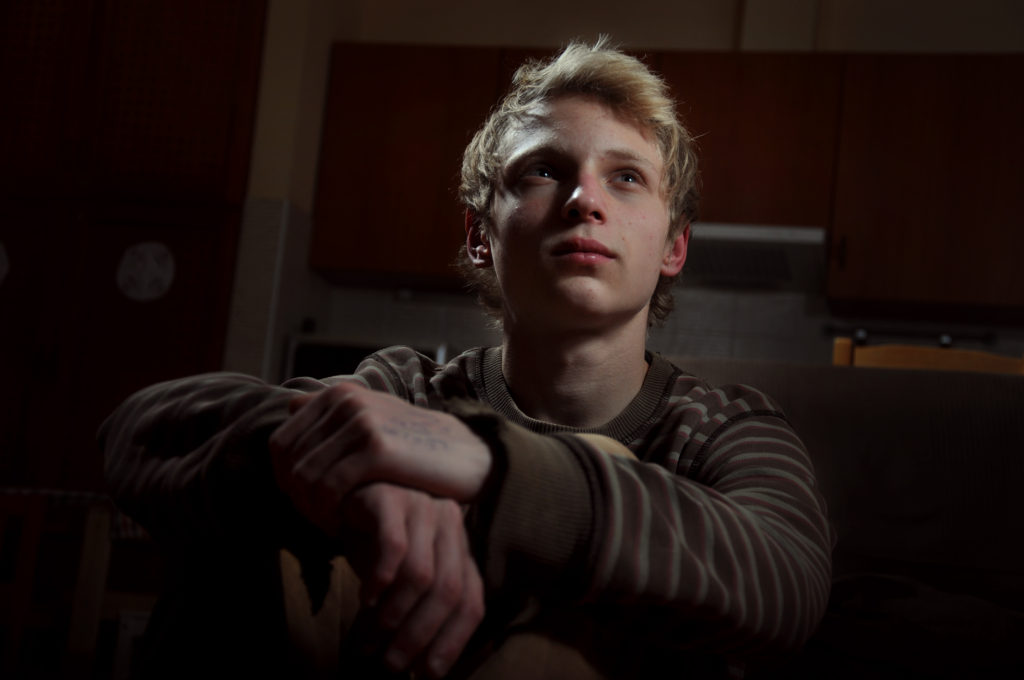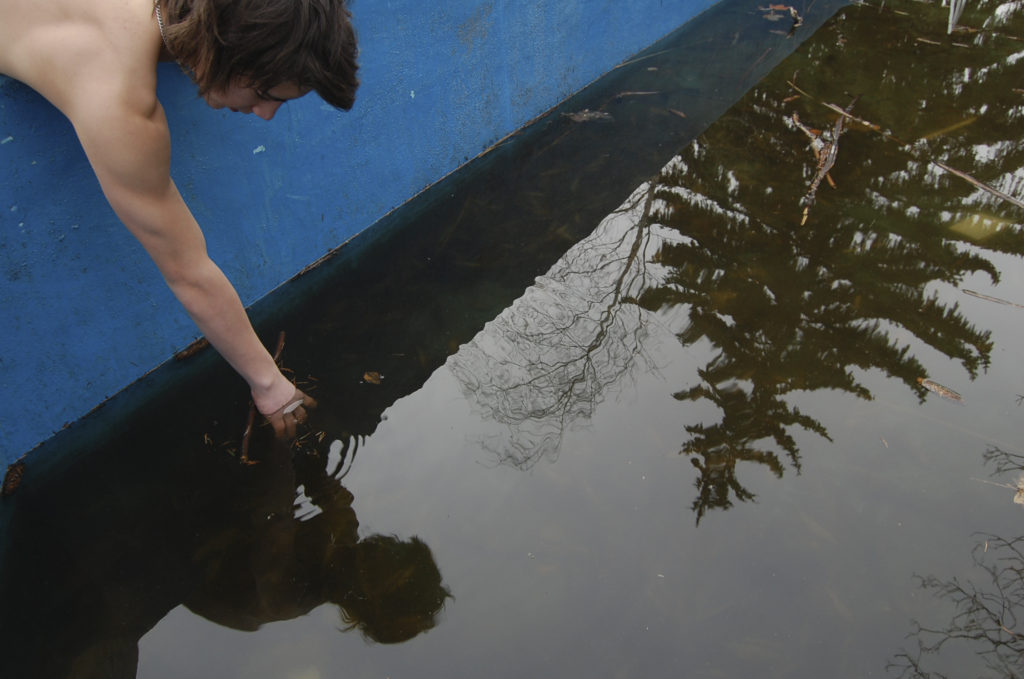Gyermekotthon-Autonóm riport
Fotósorozatom gyermekotthonban nevelkedett gyerekek életét mutatja be. Autonóm riport, mert személyes élményeken alapul. A megszokottól eltérően, szerettem volna bemutatni ezeknek a gyerekeknek az életét, élethelyzeteit. A képek készítése során felmerülő kérdésekre kerestem a válaszokat.
Kell-e, hogy egy szociálisan hátrányos gyermek életét drasztikusan ábrázoljuk, tárjuk a nézők elé? Vagy ők belülről másképpen látják, élik meg mindennapjaikat?
-A képek nagy része nem beállított. A gyerekek kedvük szerint viselkedtek és ők döntötték el,
mennyi az, amit meg szeretnének mutatni magukból. A gyerekek nem feszengtek a gép miatt, nem féltek attól, hogy az életükbe belenéző idegen mit lát vagy láttat abból. Tehát ez az autonóm riport számomra egy napló is lehetne, amely lezárja, amit a gyermekotthonban töltöttem. Feldolgozza a gyerekekkel való viszonyomat, az elszakadást a környezettől, otthontól. Kihívás is volt számomra ez a feladat. Mert azzal, hogy nap, mint nap visszajártam a régi helyre, magamra vállaltam a honvágy veszélyét. Azt, hogy emlékek törnek fel, amikor a képeket kell készítenem. De így, hogy nem, mint fotós veszek részt a munkában, hanem mint egy társuk, sokkal nyitottabban tudnak viselkedni.
A fotósorozat nem változtatta meg a képen szereplő embereket. Inkább a megértésre ösztönöz. Nem akartam mást mutatni, mint amit az ott töltött évek alatt tapasztaltam. Teljesen nem tudok objektíven képet alkotni, mert saját élményeimet is akarva-akaratlanul belehelyezem. Mindennapos eseményeket ölel fel a fotózás, reggeltől – estig. A fürdetés intimebb pillanatától a délutáni kosarazásig. Hagytam, hogy a szokásos kerékvágásban menjenek a dolgok, ha megtetszett egy pillanat, nem állítottam meg az eseményeket egyszerűen lefotóztam. A portrék mögött hosszas párbeszédek vannak, a gyerekek elmesélték hogyan érzik magukat, mi történt velük. Az intimitásában az a szép, hogy nincs megfelelési kényszer, nincsenek helyes és helytelen válaszok a kérdésekre, ahogy „rossz” képek sem. A gyerekeket nem érdekelte, milyen ruhában vannak, hogyan festenek a képen és ki fogja megnézni azokat. Nem elvenni akartam valamit tőlük, hanem adni nekik, megörökíteni egy olyan pillanatot, ami tényleg róluk szól, előítéletek nélkül.
Egy ismerősöm azt mondta a képekről:
-”Idilli lett, olyan melegséget áraszt, hogy akár egy családban felnőtt gyerekről is készülhettekvolna.”
Miért kéne azonosítani az ő (mi) életü(n)ket a melankóliával?
Miért ne lehetne idilli az az élet, amelyet megélnek? A cél, pont az lenne, hogy a figyelmük elterelődjön azokról a dolgokról, amikben hiányt szenvednek más gyerekekhez képest.
Children’s Home – Autonomous Report
My photo series shows the life of children raised in children’s homes. It’s an autonomous report in a sense that it is based on personal experience. I wanted to show the lives and life situations of these children differently, not in the accustomed way. I was searching for answers that came up while I was making the photos. Is it necessary to portray the life of a socially disadvantaged child drastically, should the viewers really see it as it is? Or do these children see and live their everyday lives differently? Most of the photos are not composed ones. The children behaved as they wanted to and they decided how much they chose to show of themselves. They were not concerned with the camera and did not worry about what is seen by the outsider peeking into their lives. So this independent report could be a diary for me which closes the period I spent in the children’s home. It processes the relationship I had with the children, the break-away from the background and home. This work was a challenge for me. By going back to the old surroundings each and every day, I risked the danger of becoming homesick. And that memories could surface while making the photos. But the fact that I’m not working as a photographer, but as their peer, makes them much more open. The photo shoot did not change the persons on the photos. It encouraged understanding instead. I did not want to show anything else than what I experienced during the years I spent there. I cannot create a completely objective picture, because unintentionally I project my own experiences. The photo shoot portrays everyday events from morning till night. From the more intimate moment of taking a bath right to the afternoon basketball play. I let things go in their usual way, and when I liked a certain moment, I did not stop the events, I simply photographed them. Behind the portraits are long conversations, the children telling me how they feel and what happened to them. The wonderful part of intimacy is that there is no forced compliance, there are no right and wrong answers to questions, just as there are no “bad” pictures either. The children did not care about the kind of clothes they were wearing, the way they look on the photos and who was going to see these photos. I did not want to take something away from them, but wanted to give them something instead and to capture a moment that is really about them, without biases. A friend of mine said of the photos:
“They are so idyllic, they radiate such warmth that they could be about children growing up in a family.”
Why do we have to identify their (our) lives with melancholy?
Why can’t the lives they live be idyllic? The objective would be to have their attention distracted from the things they lack compared to other children.























